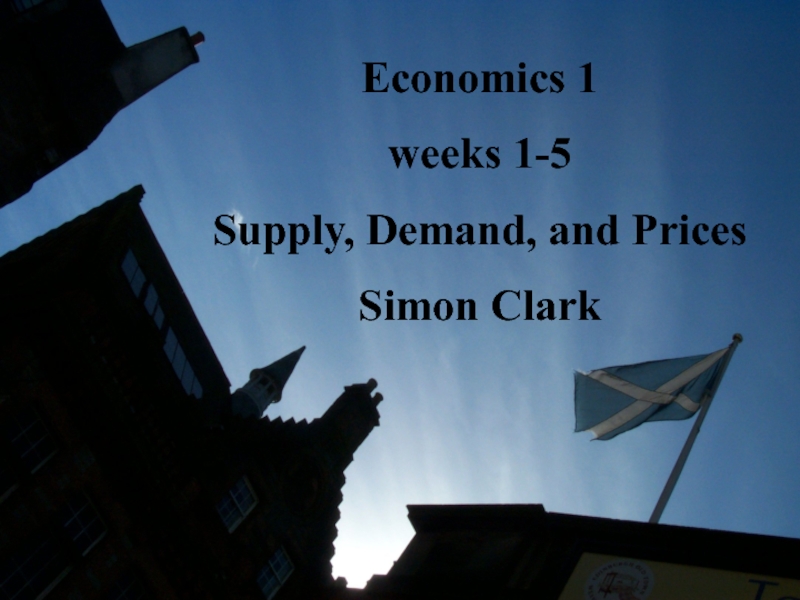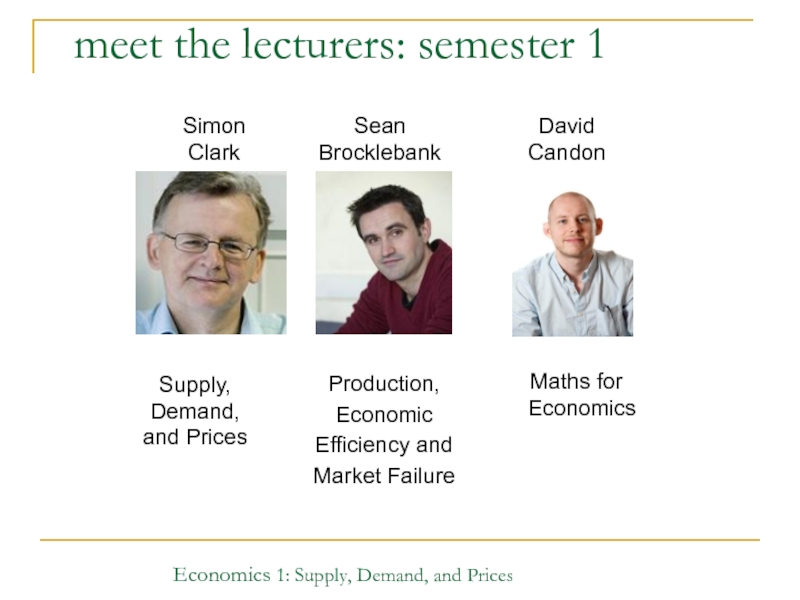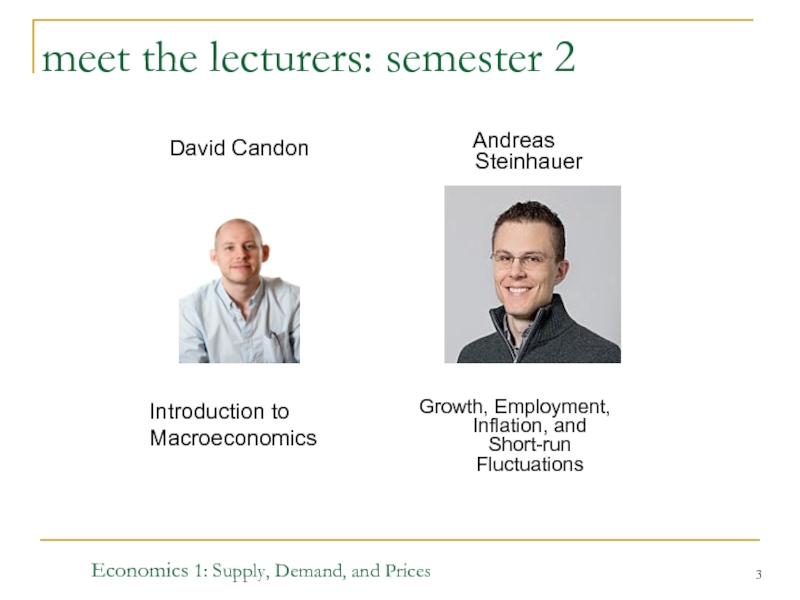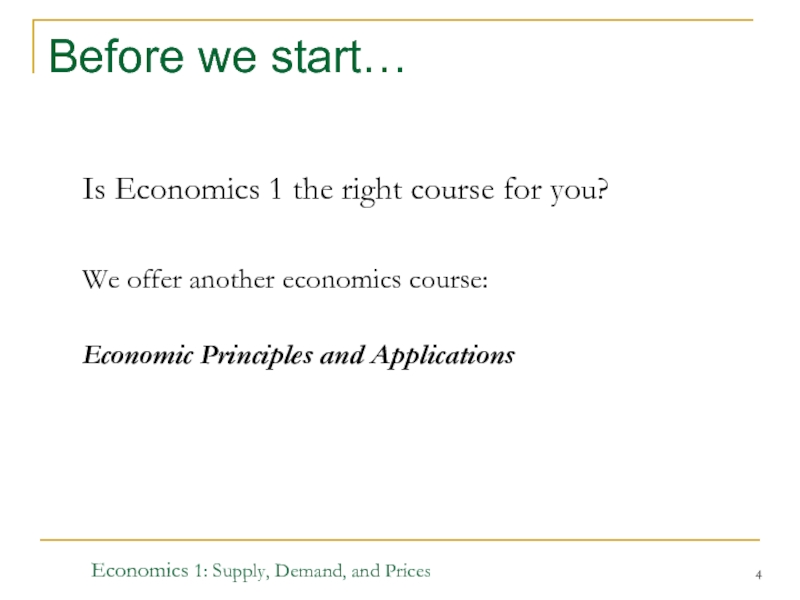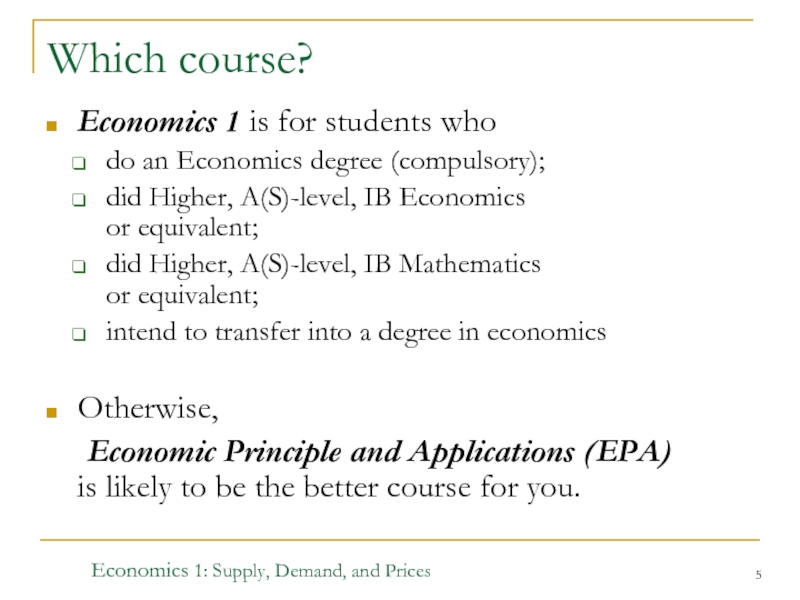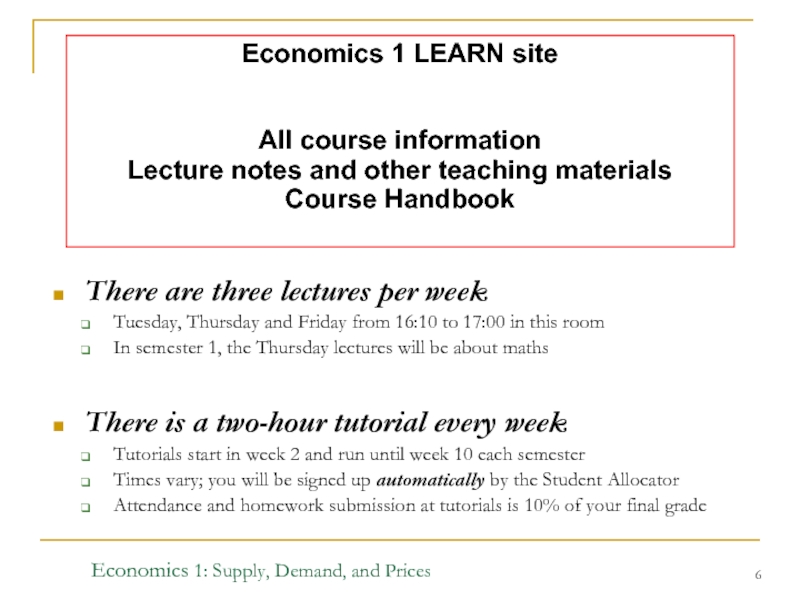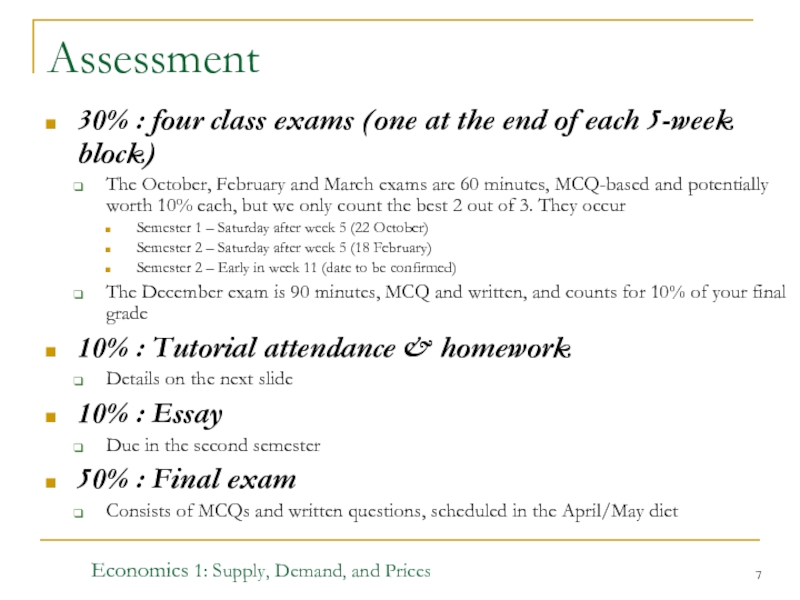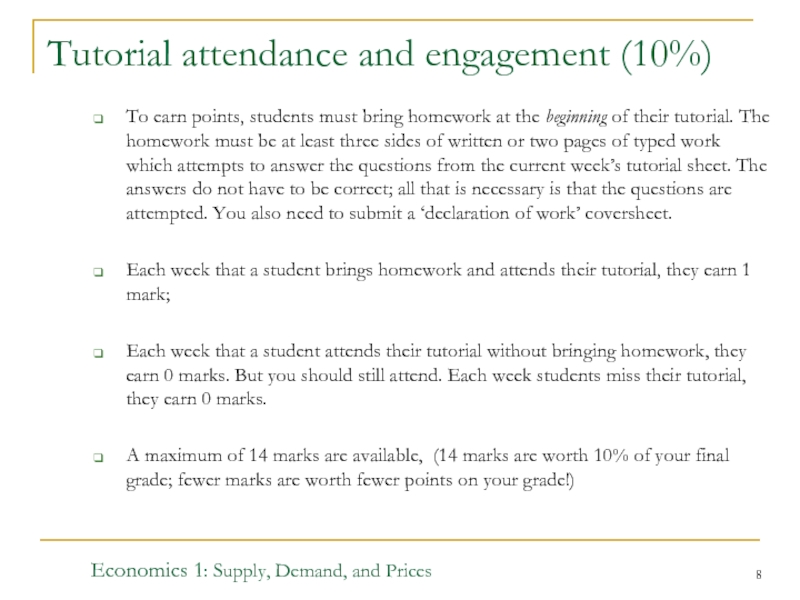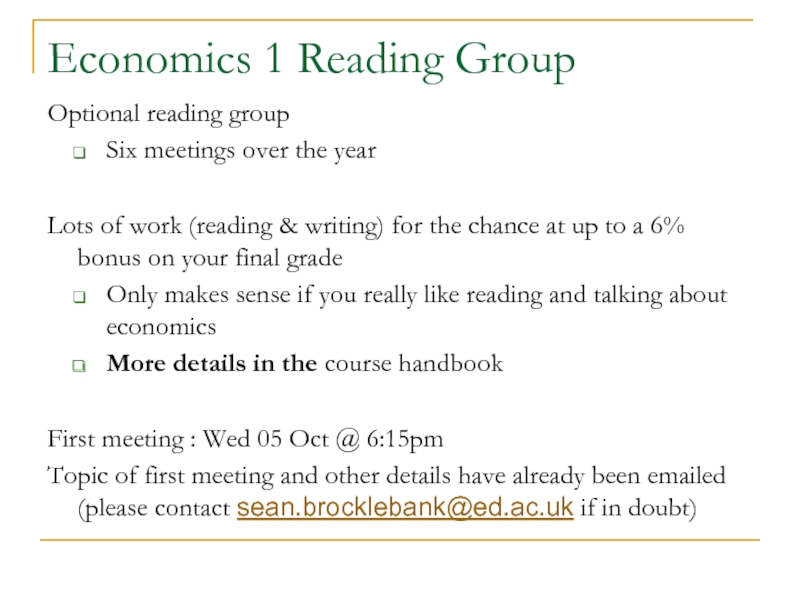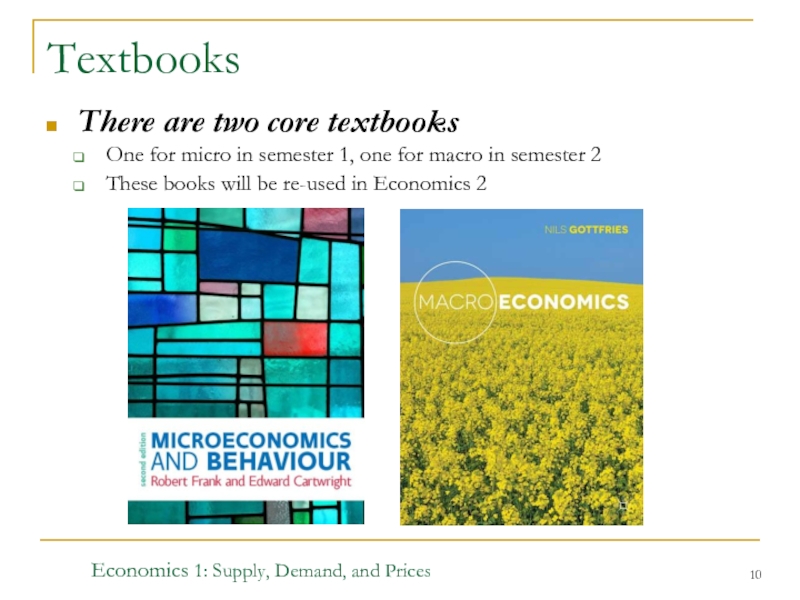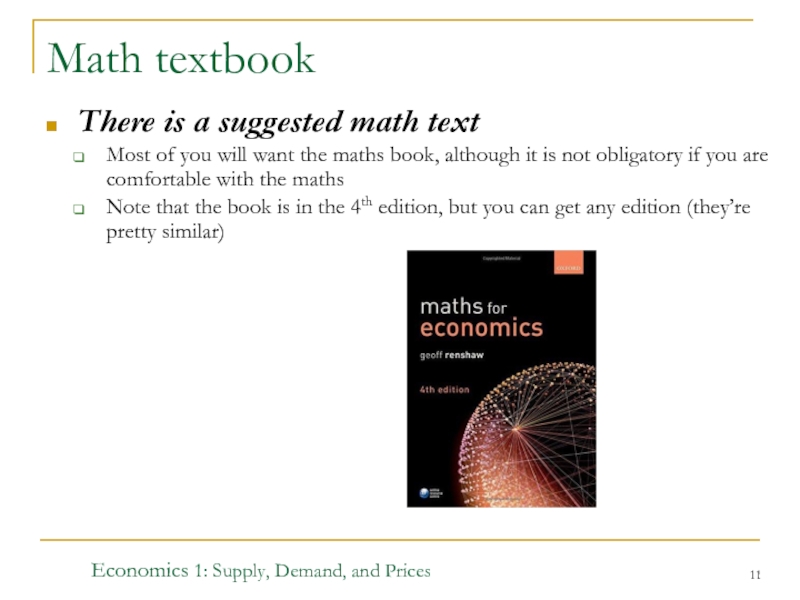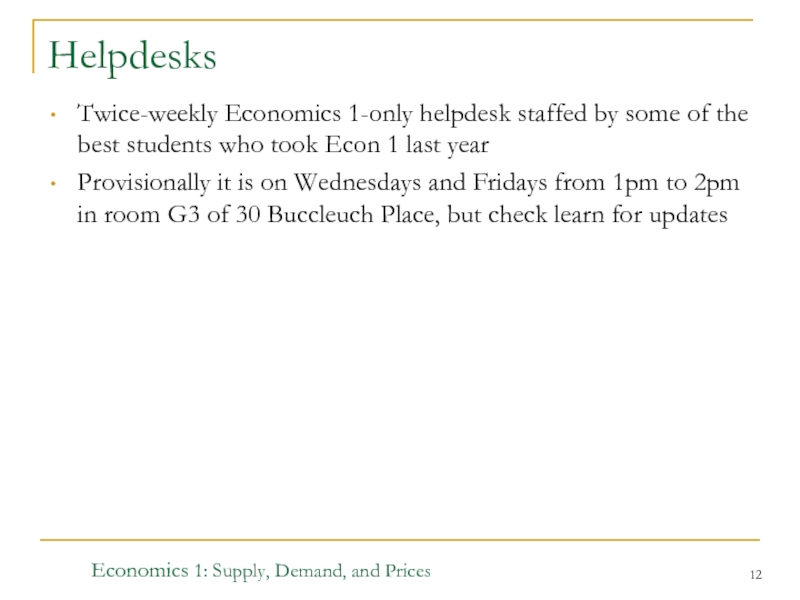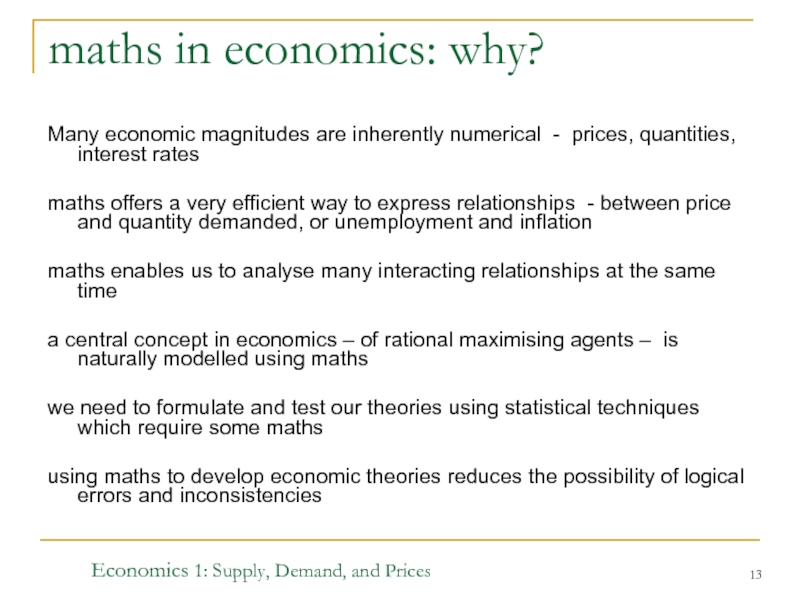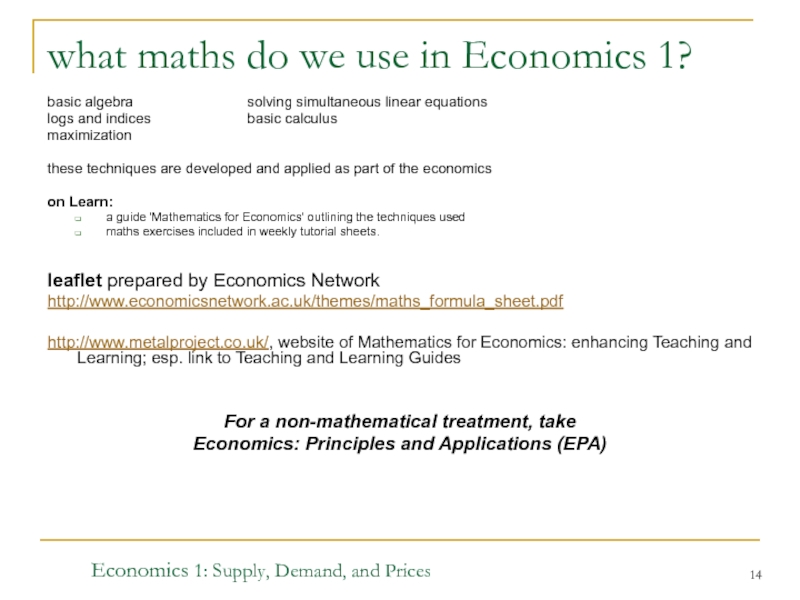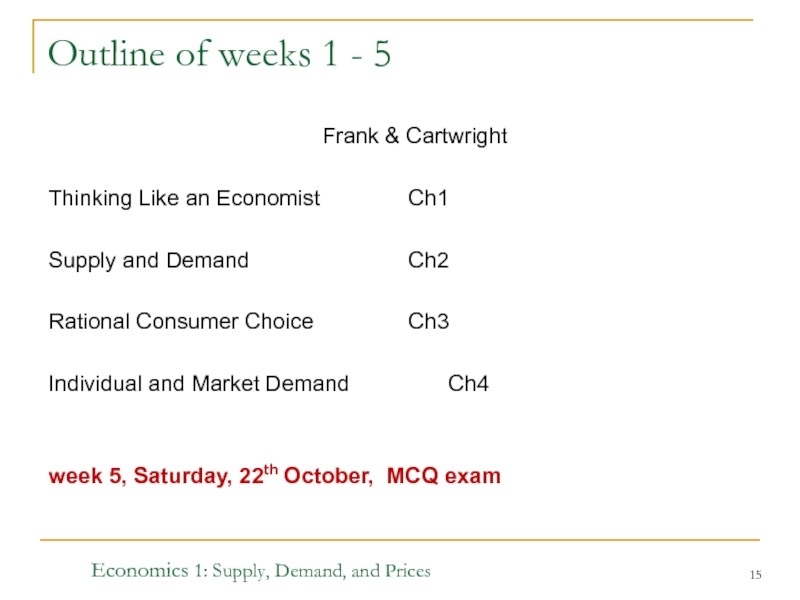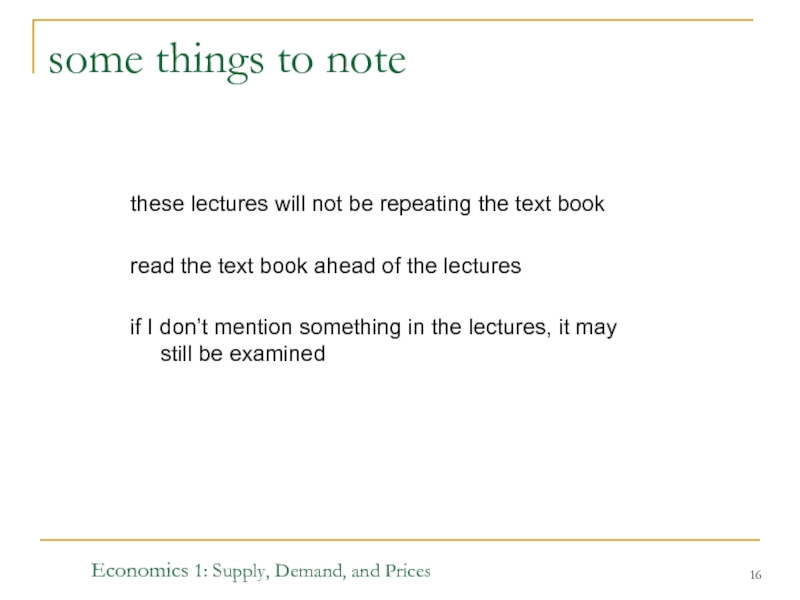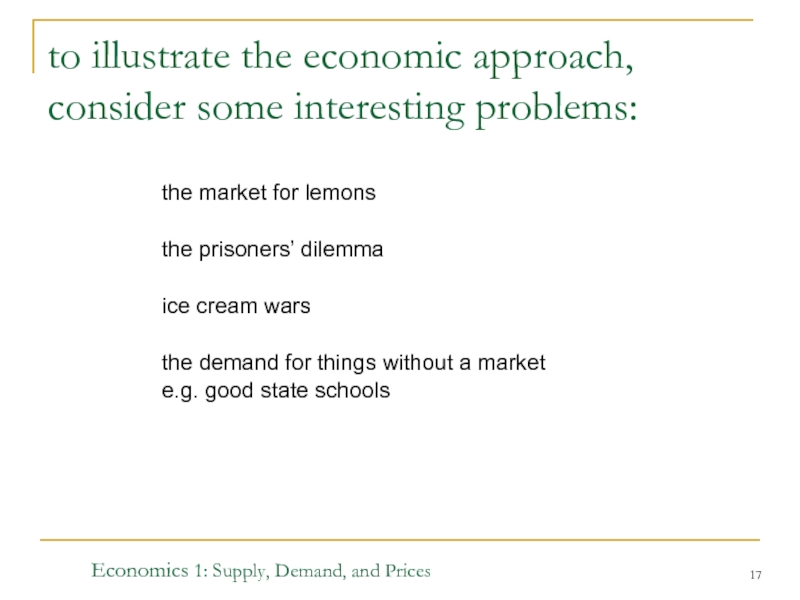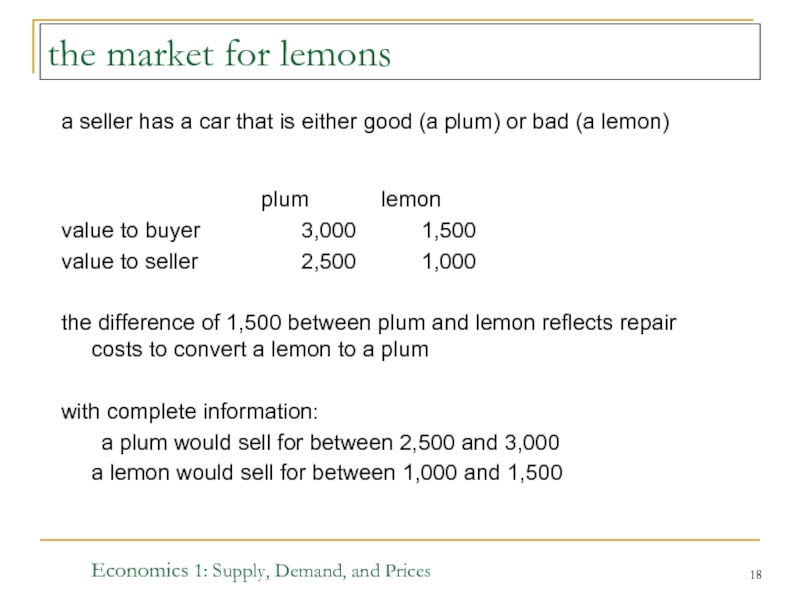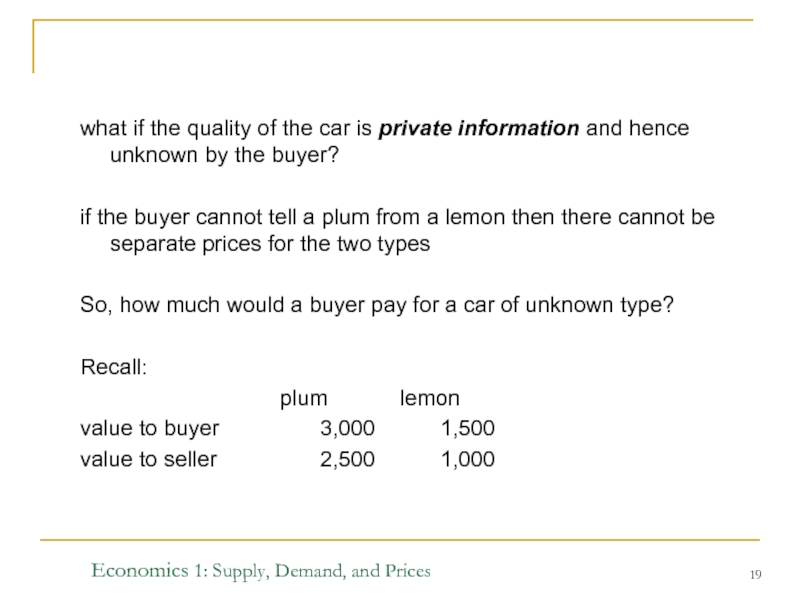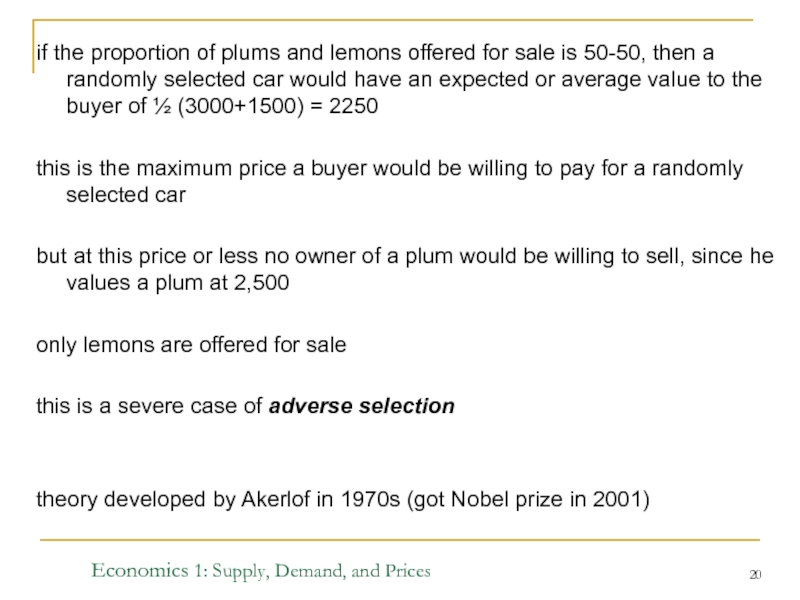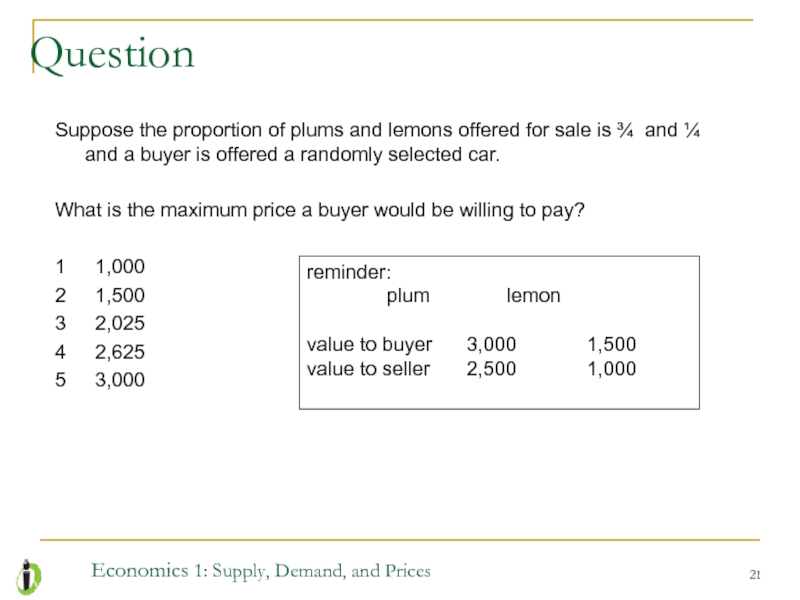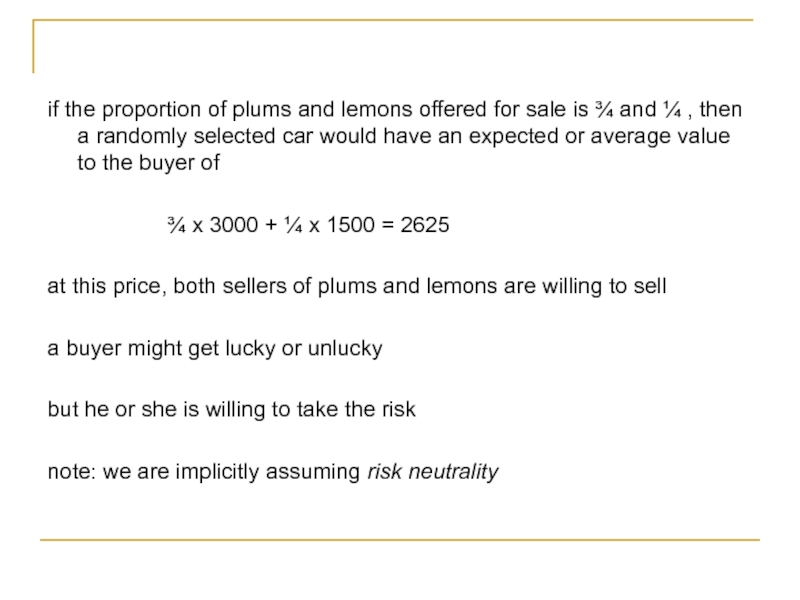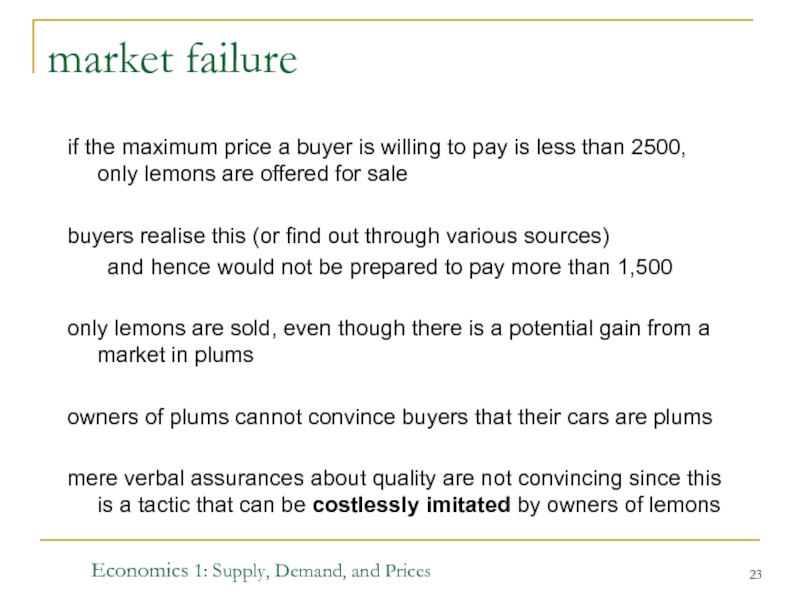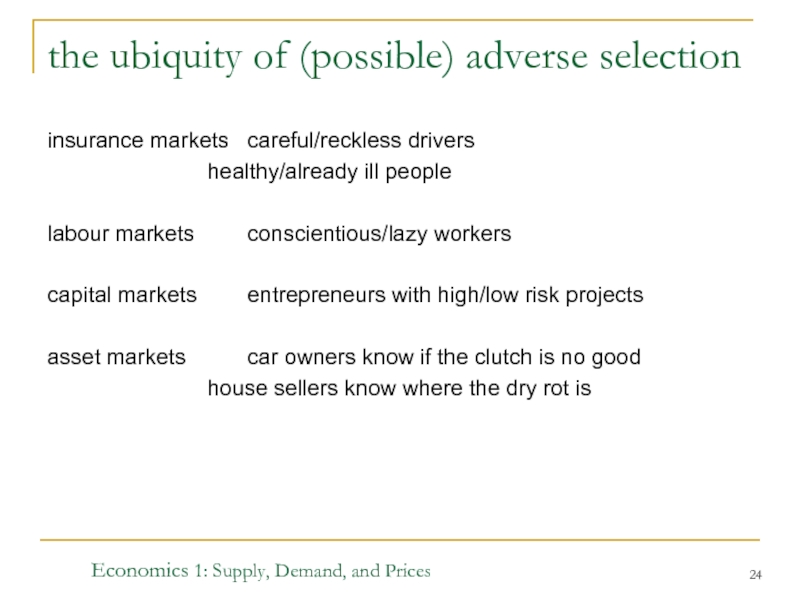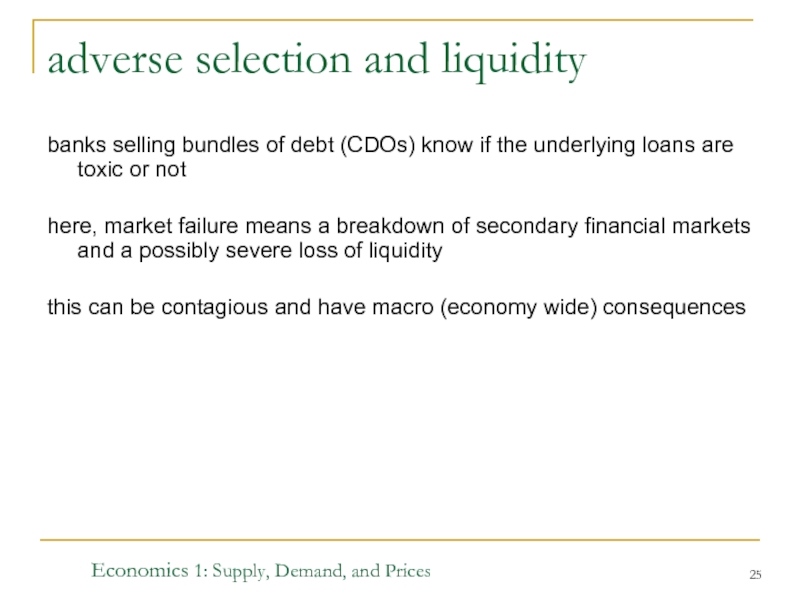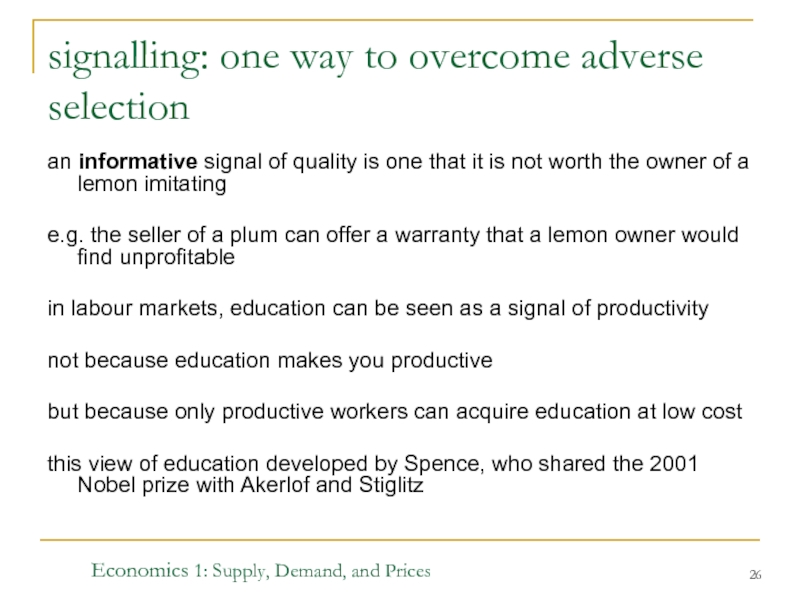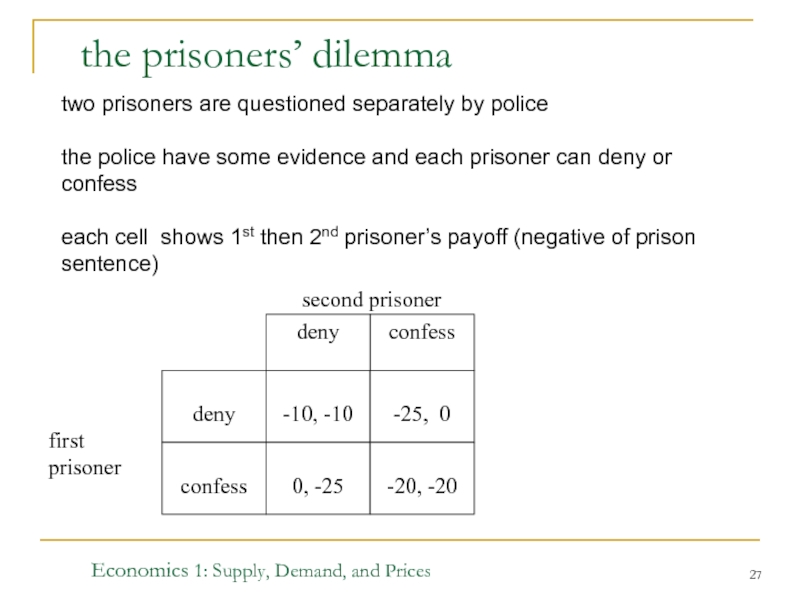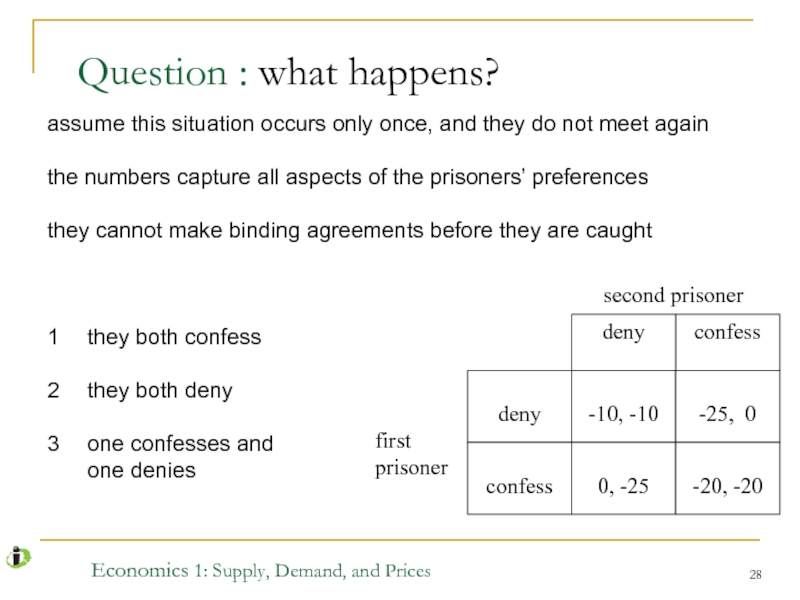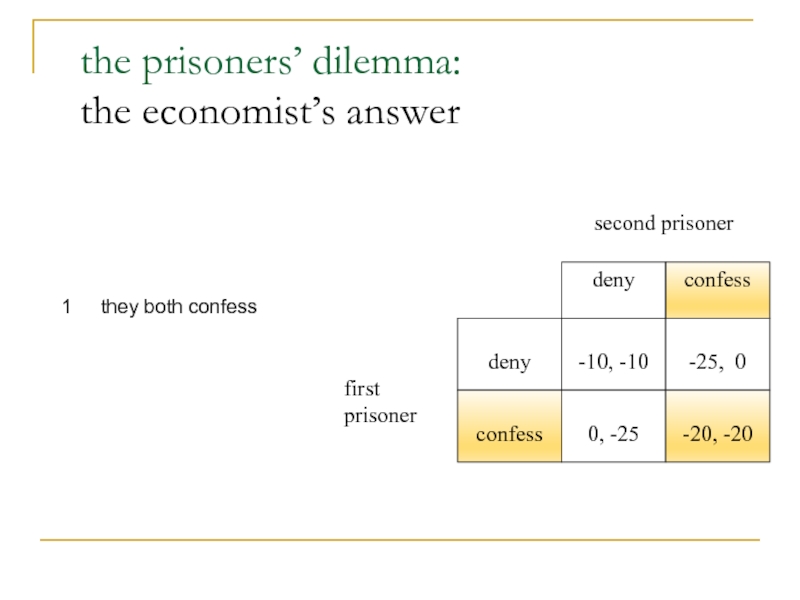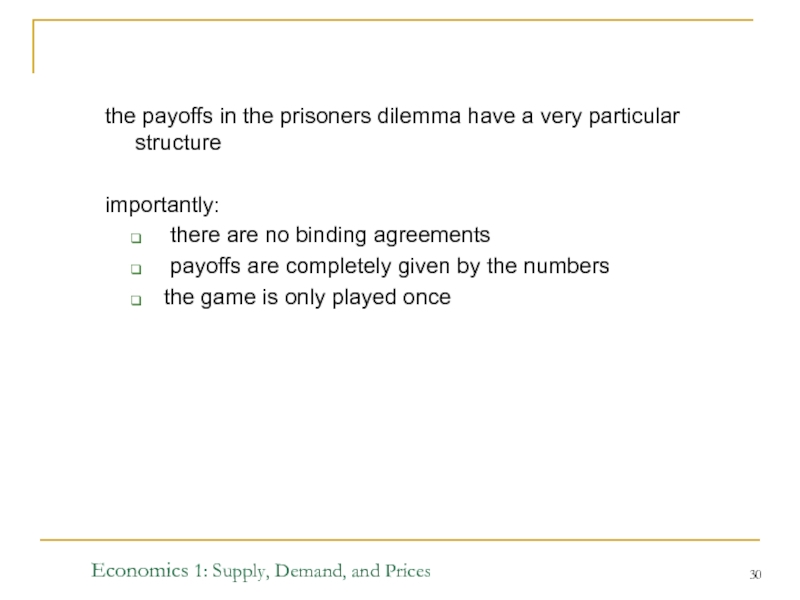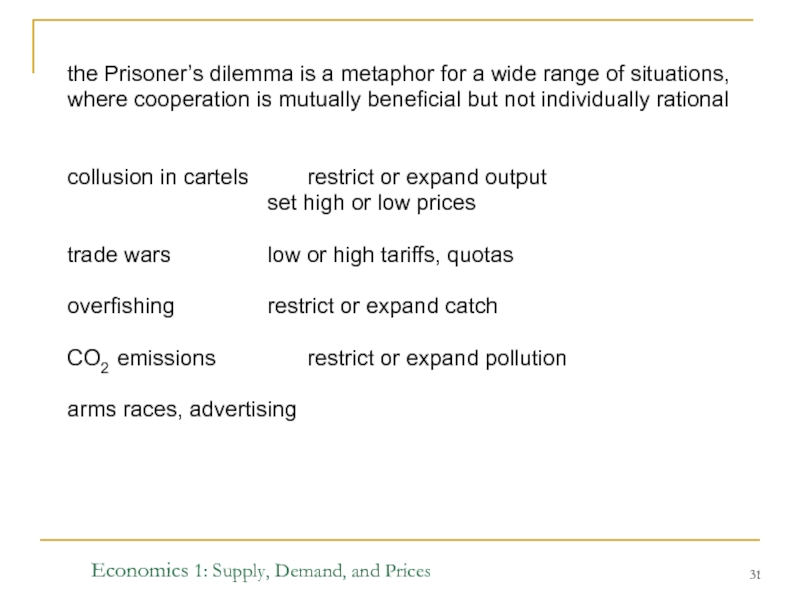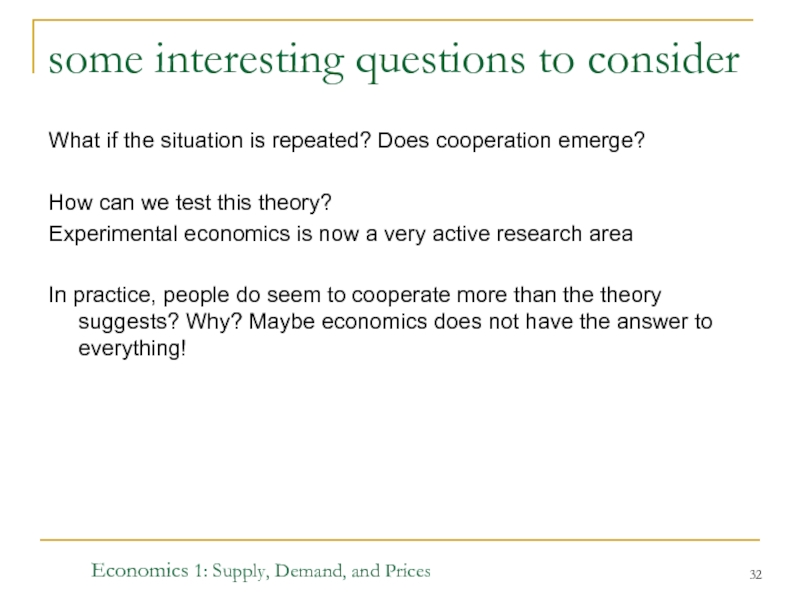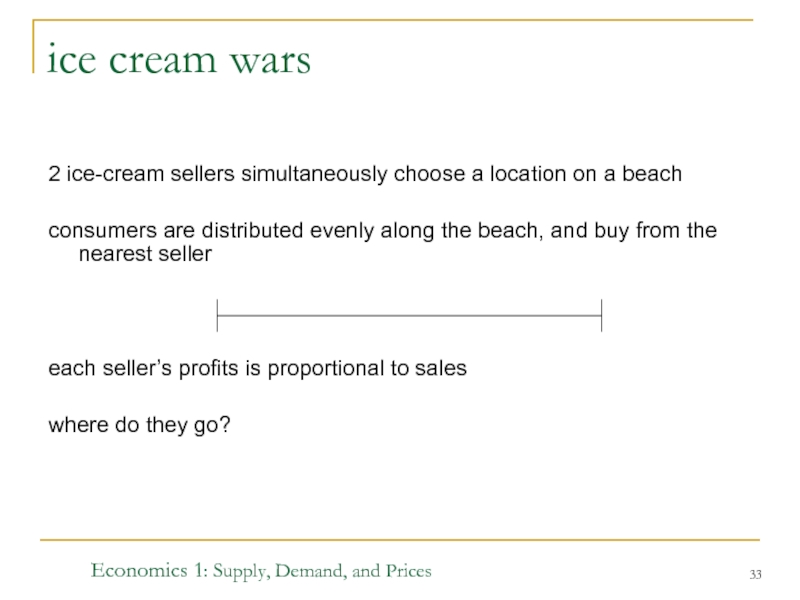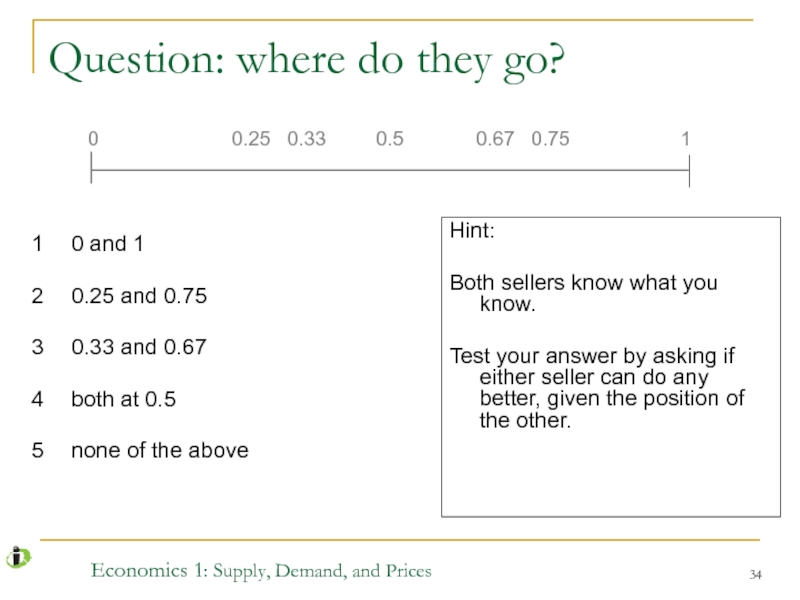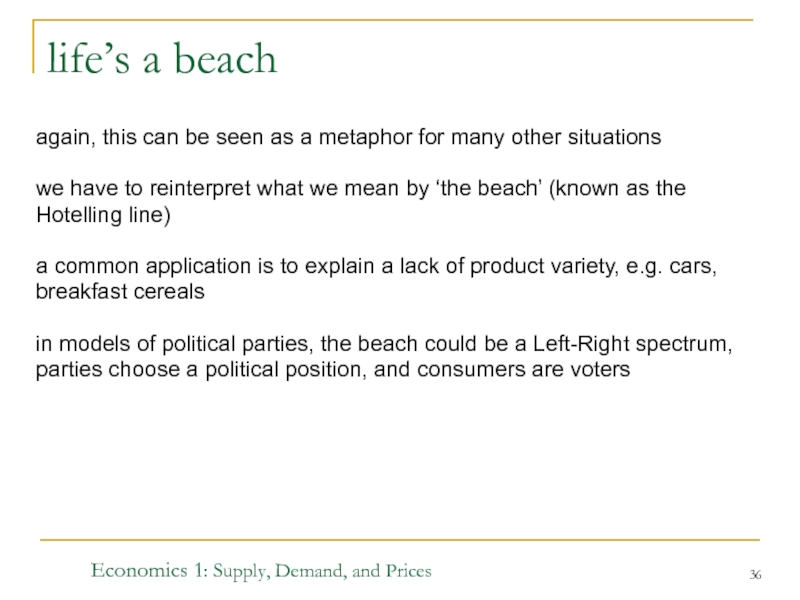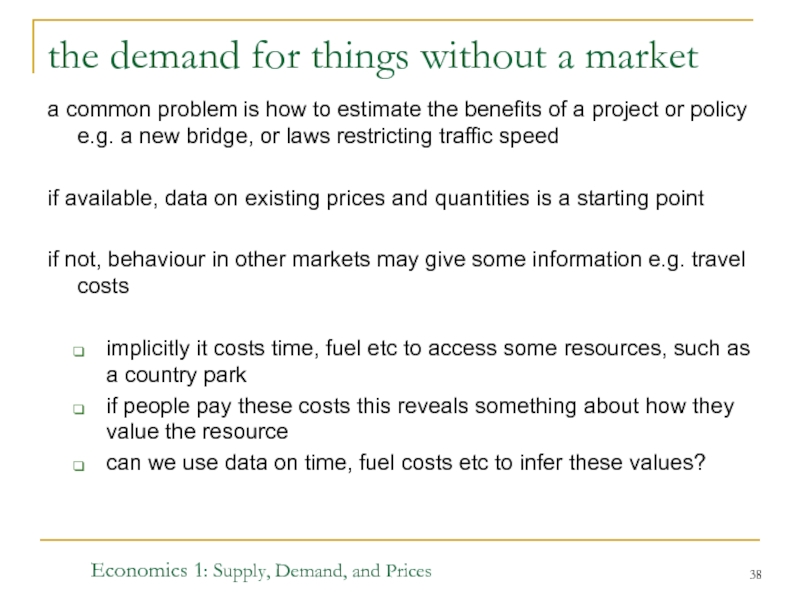- Главная
- Разное
- Дизайн
- Бизнес и предпринимательство
- Аналитика
- Образование
- Развлечения
- Красота и здоровье
- Финансы
- Государство
- Путешествия
- Спорт
- Недвижимость
- Армия
- Графика
- Культурология
- Еда и кулинария
- Лингвистика
- Английский язык
- Астрономия
- Алгебра
- Биология
- География
- Детские презентации
- Информатика
- История
- Литература
- Маркетинг
- Математика
- Медицина
- Менеджмент
- Музыка
- МХК
- Немецкий язык
- ОБЖ
- Обществознание
- Окружающий мир
- Педагогика
- Русский язык
- Технология
- Физика
- Философия
- Химия
- Шаблоны, картинки для презентаций
- Экология
- Экономика
- Юриспруденция
Supply, Demand, and Prices презентация
Содержание
- 1. Supply, Demand, and Prices
- 2. Economics 1: Supply, Demand, and Prices
- 3. Economics 1: Supply, Demand, and Prices meet
- 4. Economics 1: Supply, Demand, and Prices Before
- 5. Economics 1: Supply, Demand, and Prices Which
- 6. Economics 1: Supply, Demand, and Prices There
- 7. Assessment 30% : four class exams (one
- 8. Tutorial attendance and engagement (10%) To
- 9. Economics 1 Reading Group Optional reading group
- 10. Economics 1: Supply, Demand, and Prices Textbooks
- 11. Economics 1: Supply, Demand, and Prices Math
- 12. Economics 1: Supply, Demand, and Prices Helpdesks
- 13. Economics 1: Supply, Demand, and Prices maths
- 14. Economics 1: Supply, Demand, and Prices what
- 15. Economics 1: Supply, Demand, and Prices Outline
- 16. Economics 1: Supply, Demand, and Prices some
- 17. Economics 1: Supply, Demand, and Prices to
- 18. Economics 1: Supply, Demand, and Prices the
- 19. Economics 1: Supply, Demand, and Prices what
- 20. Economics 1: Supply, Demand, and Prices if
- 21. Economics 1: Supply, Demand, and Prices Suppose
- 22. if the proportion of plums and
- 23. Economics 1: Supply, Demand, and Prices market
- 24. Economics 1: Supply, Demand, and Prices the
- 25. Economics 1: Supply, Demand, and Prices adverse
- 26. Economics 1: Supply, Demand, and Prices signalling:
- 27. Economics 1: Supply, Demand, and Prices the
- 28. Economics 1: Supply, Demand, and Prices Question
- 29. the prisoners’ dilemma: the economist’s answer
- 30. Economics 1: Supply, Demand, and Prices the
- 31. Economics 1: Supply, Demand, and Prices the
- 32. Economics 1: Supply, Demand, and Prices What
- 33. Economics 1: Supply, Demand, and Prices ice
- 34. Economics 1: Supply, Demand, and Prices Question:
- 35. Economics 1: Supply, Demand, and Prices
- 36. Economics 1: Supply, Demand, and Prices again,
- 37. Economics 1: Supply, Demand, and Prices some
- 38. Economics 1: Supply, Demand, and Prices the
- 39. Economics 1: Supply, Demand, and Prices hedonic
- 40. Economics 1: Supply, Demand, and Prices using
- 41. Economics 1: Supply, Demand, and Prices house
- 42. Economics 1: Supply, Demand, and Prices after
- 43. Economics 1: Supply, Demand, and Prices conclusions
- 44. Economics 1: Supply, Demand, and Prices conclusions
- 45. Economics 1: Supply, Demand, and Prices How
Слайд 1Economics 1: Supply, Demand, and Prices
Economics 1
weeks 1-5
Supply, Demand, and Prices
Simon
Слайд 2
Economics 1: Supply, Demand, and Prices
meet the lecturers: semester 1
Simon
Clark
Supply,
Demand,
and
Production,
Economic
Efficiency and
Market Failure
Maths for Economics
Sean
Brocklebank
David
Candon
Слайд 3Economics 1: Supply, Demand, and Prices
meet the lecturers: semester 2
Growth, Employment,
Introduction to
Macroeconomics
Andreas Steinhauer
David Candon
Слайд 4Economics 1: Supply, Demand, and Prices
Before we start…
Is Economics
We offer another economics course:
Economic Principles and Applications
Слайд 5Economics 1: Supply, Demand, and Prices
Which course?
Economics 1 is for students
do an Economics degree (compulsory);
did Higher, A(S)-level, IB Economics or equivalent;
did Higher, A(S)-level, IB Mathematics or equivalent;
intend to transfer into a degree in economics
Otherwise,
Economic Principle and Applications (EPA) is likely to be the better course for you.
Слайд 6Economics 1: Supply, Demand, and Prices
There are three lectures per week
Tuesday,
In semester 1, the Thursday lectures will be about maths
There is a two-hour tutorial every week
Tutorials start in week 2 and run until week 10 each semester
Times vary; you will be signed up automatically by the Student Allocator
Attendance and homework submission at tutorials is 10% of your final grade
Economics 1 LEARN site
All course information
Lecture notes and other teaching materials
Course Handbook
Слайд 7Assessment
30% : four class exams (one at the end of each
The October, February and March exams are 60 minutes, MCQ-based and potentially worth 10% each, but we only count the best 2 out of 3. They occur
Semester 1 – Saturday after week 5 (22 October)
Semester 2 – Saturday after week 5 (18 February)
Semester 2 – Early in week 11 (date to be confirmed)
The December exam is 90 minutes, MCQ and written, and counts for 10% of your final grade
10% : Tutorial attendance & homework
Details on the next slide
10% : Essay
Due in the second semester
50% : Final exam
Consists of MCQs and written questions, scheduled in the April/May diet
Economics 1: Supply, Demand, and Prices
Слайд 8Tutorial attendance and engagement (10%)
To earn points, students must bring homework
Each week that a student brings homework and attends their tutorial, they earn 1 mark;
Each week that a student attends their tutorial without bringing homework, they earn 0 marks. But you should still attend. Each week students miss their tutorial, they earn 0 marks.
A maximum of 14 marks are available, (14 marks are worth 10% of your final grade; fewer marks are worth fewer points on your grade!)
Economics 1: Supply, Demand, and Prices
Слайд 9Economics 1 Reading Group
Optional reading group
Six meetings over the year
Lots of
Only makes sense if you really like reading and talking about economics
More details in the course handbook
First meeting : Wed 05 Oct @ 6:15pm
Topic of first meeting and other details have already been emailed (please contact sean.brocklebank@ed.ac.uk if in doubt)
Слайд 10Economics 1: Supply, Demand, and Prices
Textbooks
There are two core textbooks
One for
These books will be re-used in Economics 2
Слайд 11Economics 1: Supply, Demand, and Prices
Math textbook
There is a suggested math
Most of you will want the maths book, although it is not obligatory if you are comfortable with the maths
Note that the book is in the 4th edition, but you can get any edition (they’re pretty similar)
Слайд 12Economics 1: Supply, Demand, and Prices
Helpdesks
Twice-weekly Economics 1-only helpdesk staffed by
Provisionally it is on Wednesdays and Fridays from 1pm to 2pm in room G3 of 30 Buccleuch Place, but check learn for updates
Слайд 13Economics 1: Supply, Demand, and Prices
maths in economics: why?
Many economic magnitudes
maths offers a very efficient way to express relationships - between price and quantity demanded, or unemployment and inflation
maths enables us to analyse many interacting relationships at the same time
a central concept in economics – of rational maximising agents – is naturally modelled using maths
we need to formulate and test our theories using statistical techniques which require some maths
using maths to develop economic theories reduces the possibility of logical errors and inconsistencies
Слайд 14Economics 1: Supply, Demand, and Prices
what maths do we use in
basic algebra solving simultaneous linear equations
logs and indices basic calculus
maximization
these techniques are developed and applied as part of the economics
on Learn:
a guide 'Mathematics for Economics' outlining the techniques used
maths exercises included in weekly tutorial sheets.
leaflet prepared by Economics Network
http://www.economicsnetwork.ac.uk/themes/maths_formula_sheet.pdf
http://www.metalproject.co.uk/, website of Mathematics for Economics: enhancing Teaching and Learning; esp. link to Teaching and Learning Guides
For a non-mathematical treatment, take
Economics: Principles and Applications (EPA)
Слайд 15Economics 1: Supply, Demand, and Prices
Outline of weeks 1 - 5
Thinking Like an Economist Ch1
Supply and Demand Ch2
Rational Consumer Choice Ch3
Individual and Market Demand Ch4
week 5, Saturday, 22th October, MCQ exam
Слайд 16Economics 1: Supply, Demand, and Prices
some things to note
these lectures will
read the text book ahead of the lectures
if I don’t mention something in the lectures, it may still be examined
Слайд 17Economics 1: Supply, Demand, and Prices
to illustrate the economic approach, consider
the market for lemons
the prisoners’ dilemma
ice cream wars
the demand for things without a market
e.g. good state schools
Слайд 18Economics 1: Supply, Demand, and Prices
the market for lemons
a seller has a car that is either good (a plum) or bad (a lemon)
plum lemon
value to buyer 3,000 1,500
value to seller 2,500 1,000
the difference of 1,500 between plum and lemon reflects repair costs to convert a lemon to a plum
with complete information:
a plum would sell for between 2,500 and 3,000
a lemon would sell for between 1,000 and 1,500
Слайд 19Economics 1: Supply, Demand, and Prices
what if the quality of the
if the buyer cannot tell a plum from a lemon then there cannot be separate prices for the two types
So, how much would a buyer pay for a car of unknown type?
Recall:
plum lemon
value to buyer 3,000 1,500
value to seller 2,500 1,000
Слайд 20Economics 1: Supply, Demand, and Prices
if the proportion of plums and
this is the maximum price a buyer would be willing to pay for a randomly selected car
but at this price or less no owner of a plum would be willing to sell, since he values a plum at 2,500
only lemons are offered for sale
this is a severe case of adverse selection
theory developed by Akerlof in 1970s (got Nobel prize in 2001)
Слайд 21Economics 1: Supply, Demand, and Prices
Suppose the proportion of plums and
What is the maximum price a buyer would be willing to pay?
1 1,000
2 1,500
3 2,025
4 2,625
5 3,000
Question
reminder:
plum lemon
value to buyer 3,000 1,500
value to seller 2,500 1,000
Слайд 22
if the proportion of plums and lemons offered for sale is
¾ x 3000 + ¼ x 1500 = 2625
at this price, both sellers of plums and lemons are willing to sell
a buyer might get lucky or unlucky
but he or she is willing to take the risk
note: we are implicitly assuming risk neutrality
Слайд 23Economics 1: Supply, Demand, and Prices
market failure
if the maximum price a
buyers realise this (or find out through various sources)
and hence would not be prepared to pay more than 1,500
only lemons are sold, even though there is a potential gain from a market in plums
owners of plums cannot convince buyers that their cars are plums
mere verbal assurances about quality are not convincing since this is a tactic that can be costlessly imitated by owners of lemons
Слайд 24Economics 1: Supply, Demand, and Prices
the ubiquity of (possible) adverse selection
insurance
healthy/already ill people
labour markets conscientious/lazy workers
capital markets entrepreneurs with high/low risk projects
asset markets car owners know if the clutch is no good
house sellers know where the dry rot is
Слайд 25Economics 1: Supply, Demand, and Prices
adverse selection and liquidity
banks selling bundles
here, market failure means a breakdown of secondary financial markets and a possibly severe loss of liquidity
this can be contagious and have macro (economy wide) consequences
Слайд 26Economics 1: Supply, Demand, and Prices
signalling: one way to overcome adverse
an informative signal of quality is one that it is not worth the owner of a lemon imitating
e.g. the seller of a plum can offer a warranty that a lemon owner would find unprofitable
in labour markets, education can be seen as a signal of productivity
not because education makes you productive
but because only productive workers can acquire education at low cost
this view of education developed by Spence, who shared the 2001 Nobel prize with Akerlof and Stiglitz
Слайд 27Economics 1: Supply, Demand, and Prices
the prisoners’ dilemma
deny
-10, -10
0, -25
confess
-25, 0
-20,
confess
deny
first prisoner
second prisoner
two prisoners are questioned separately by police
the police have some evidence and each prisoner can deny or confess
each cell shows 1st then 2nd prisoner’s payoff (negative of prison sentence)
Слайд 28Economics 1: Supply, Demand, and Prices
Question : what happens?
deny
-10, -10
0, -25
confess
-25,
-20, -20
confess
deny
first prisoner
second prisoner
assume this situation occurs only once, and they do not meet again
the numbers capture all aspects of the prisoners’ preferences
they cannot make binding agreements before they are caught
1 they both confess
2 they both deny
3 one confesses and
one denies
Слайд 29the prisoners’ dilemma:
the economist’s answer
deny
-10, -10
0, -25
confess
-25, 0
-20, -20
confess
deny
first prisoner
second prisoner
1 they
Слайд 30Economics 1: Supply, Demand, and Prices
the payoffs in the prisoners dilemma
importantly:
there are no binding agreements
payoffs are completely given by the numbers
the game is only played once
Слайд 31Economics 1: Supply, Demand, and Prices
the Prisoner’s dilemma is a metaphor
where cooperation is mutually beneficial but not individually rational
collusion in cartels restrict or expand output
set high or low prices
trade wars low or high tariffs, quotas
overfishing restrict or expand catch
CO2 emissions restrict or expand pollution
arms races, advertising
Слайд 32Economics 1: Supply, Demand, and Prices
What if the situation is repeated?
How can we test this theory?
Experimental economics is now a very active research area
In practice, people do seem to cooperate more than the theory suggests? Why? Maybe economics does not have the answer to everything!
some interesting questions to consider
Слайд 33Economics 1: Supply, Demand, and Prices
ice cream wars
2 ice-cream sellers simultaneously
consumers are distributed evenly along the beach, and buy from the nearest seller
each seller’s profits is proportional to sales
where do they go?
Слайд 34Economics 1: Supply, Demand, and Prices
Question: where do they go?
1 0 and
2 0.25 and 0.75
3 0.33 and 0.67
4 both at 0.5
5 none of the above
0 0.25 0.33 0.5 0.67 0.75 1
Hint:
Both sellers know what you know.
Test your answer by asking if either seller can do any better, given the position of the other.
Слайд 35Economics 1: Supply, Demand, and Prices
where do they go?
1 0 and
2 0.25 and 0.75
3 0.33 and 0.67
4 both at 0.5
5 none of the above
0 0.25 0.33 0.5 0.67 0.75 1
4 both at 0.5
Слайд 36Economics 1: Supply, Demand, and Prices
again, this can be seen as
we have to reinterpret what we mean by ‘the beach’ (known as the
Hotelling line)
a common application is to explain a lack of product variety, e.g. cars,
breakfast cereals
in models of political parties, the beach could be a Left-Right spectrum,
parties choose a political position, and consumers are voters
life’s a beach
Слайд 37Economics 1: Supply, Demand, and Prices
some interesting extensions to consider
what if
what if the beach is not a line but the circumference of a circle, or the whole circle, or some other space
how would we introduce transport costs?
and what do transport costs mean in a non-geographic setting?
how do we combine competition in both price and variety?
Слайд 38Economics 1: Supply, Demand, and Prices
the demand for things without a
a common problem is how to estimate the benefits of a project or policy e.g. a new bridge, or laws restricting traffic speed
if available, data on existing prices and quantities is a starting point
if not, behaviour in other markets may give some information e.g. travel costs
implicitly it costs time, fuel etc to access some resources, such as a country park
if people pay these costs this reveals something about how they value the resource
can we use data on time, fuel costs etc to infer these values?
Слайд 39Economics 1: Supply, Demand, and Prices
hedonic pricing
people are prepared to pay
or will accept less pay for jobs that provide valued benefits
require more pay for jobs that have costs or disadvantages
think of goods or jobs as a bundle
can we put a value on each component of the bundle?
Слайд 40Economics 1: Supply, Demand, and Prices
using house prices
a house: price reflects
size,
location:
proximity to amenities (parks, transport links, access to state schools)
local environment (e.g. noise etc)
implicitly there is a market for ‘peace and quiet’, or access to good state schools’
we can collect data on prices and characteristics
then statistically disentangle influence on price of each characteristic
Слайд 41Economics 1: Supply, Demand, and Prices
house prices and school quality
Cheshire and
looked at house prices in Reading in 1999/2000
price: min=£45,000 max=£385,000 mean=£127,000
price depends on (inter alia):
detached, semi, terrace etc size of plot
no. of bedrooms, baths etc if near Thames
distance from centre of town if near industry
transport links ethnic mix
quality of primary school (success rate at Key Stage 2)
quality of secondary school (success rate at GCSEs)
Слайд 42Economics 1: Supply, Demand, and Prices
after much statistical analysis, they worked
Слайд 43Economics 1: Supply, Demand, and Prices
conclusions from the study
For the average
secondary: 19% or £23,750.
primary: 34% or £42,550.
Home buyers discount for risk: the more the variability in a school’s past results, the less is paid for current school quality. i.e. they are risk averse
Only the 'best' (top 10%) state schools command major money: being in the catchment area of an average school compared to even that of the very worst has little impact on prices.
The added cost for a home with access to the best state schools is close to the total cost of school fees for comparable private schools.
Слайд 44Economics 1: Supply, Demand, and Prices
conclusions from these problems
simple numerical examples
simple models can be enlightening – no need for lots of complications
eventually we do need to test the models with data
some concepts appear in totally different settings
apparently unrelated problems sometimes have a common structure
Слайд 45Economics 1: Supply, Demand, and Prices
How is economics done?
constructing theories
simplifying assumptions
generate
data gathering
statistical sources
“experiments”
theory testing
confront theory with data
change theory, gather more data
use the theory and data to make statements about the world, formulate policy, make money etc.
this is where econometrics comes in
this is where maths often comes in
